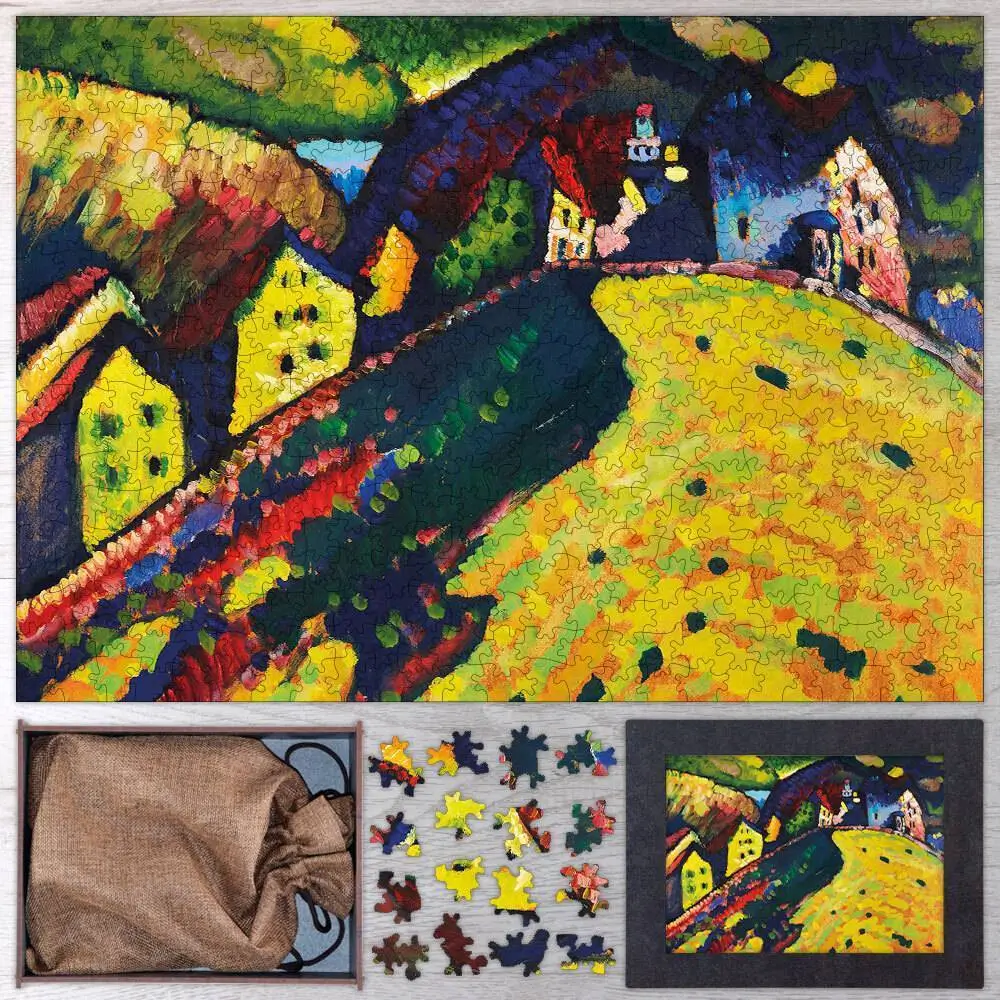Exploring the Dreamlike Qualities of Houses at Murnau by Kandinsky

We are excited to announce the latest addition to our collection of wooden jigsaw puzzles - the Houses at Murnau puzzle, featuring a stunning painting by Wassily Kandinsky. This beautiful puzzle comes in a premium wooden box with artwork on the lid, and its irregular Victorian laser-cut pieces provide hours of enjoyment and fun. But before we dive into the details of the puzzle, let's take a closer look at the artwork that inspired it.
Where is Houses at Murnau Painting Kept?
The painting "Houses at Murnau" is one of the masterpieces of Wassily Kandinsky, a Russian artist who is credited with being one of the pioneers of abstract art. The painting is currently part of the collection of the Lenbachhaus museum in Munich, Germany, where it has been on display since 1957.
What Country Did Wassily Kandinsky Paint Houses at Murnau?
Kandinsky painted "Houses at Murnau" in 1909, during his stay in the small Bavarian town of Murnau, located in southern Germany. It was during this time that Kandinsky, who was then a member of the Blue Rider movement, began to experiment with abstraction, a style that would eventually become his trademark.
What Style is Houses at Murnau Painted In?
The painting "Houses at Murnau" is an excellent example of Kandinsky's early experimentation with abstraction. Although the subject matter of the painting is recognizable - a cluster of houses in a small town - Kandinsky's use of bold colors and abstract forms gives the painting a dreamlike quality. The painting is often cited as a prime example of Kandinsky's shift towards non-objective art.
Houses at Murnau, Wassily Kandinsky - What Was Happening When This Painting Was Made?
When Kandinsky painted "Houses at Murnau," he was part of a vibrant artistic community that was pushing the boundaries of traditional art. It was during this time that Kandinsky and his fellow artists were exploring new ways of expressing themselves, using color and form to convey emotion and mood.
Houses at Murnau Colors and Meaning
The colors and forms in "Houses at Murnau" are central to the painting's meaning. Kandinsky believed that colors had their own unique properties and that they could be used to evoke specific emotions in the viewer. In "Houses at Murnau," the bright yellows and oranges suggest warmth and energy, while the darker blues and greens convey a sense of calm and stability. The abstract forms in the painting add to its dreamlike quality, inviting the viewer to explore the painting's hidden meanings.
How Much Does the Painting Houses at Murnau Cost?
The painting "Houses at Murnau" is an iconic work of art, and as such, it is highly valued by collectors. While it is difficult to estimate the painting's exact value, similar works by Kandinsky have sold for millions of dollars at auction.
The Houses at Murnau puzzle is a beautiful and engaging tribute to the work of Wassily Kandinsky. Its intricate design and vibrant colors make it a joy to put together, while the painting's rich history and meaning make it a valuable addition to any art lover's collection. We hope you enjoy this puzzle as much as we enjoyed creating it!
[ux_products_list ids="245"] https://puzzlesprint.com/exploring-the-dreamlike-qualities-of-houses-at-murnau-by-kandinsky/?feed_id=197&_unique_id=64469e2dc98b1
Comments
Post a Comment